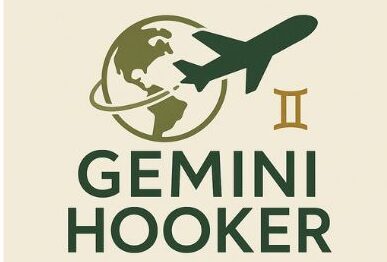In the competitive business environment, organizations always seek beyond monetary incentives or increasing salaries or cash bonuses to inspire workers, associates, or sales divisions. One of the most effective rewards tools is incentive travel.
Through experiential rewarding such as an all expenses trip, organizations will be able to increase motivation, strengthen brand values, strengthen loyalty, and provide a quantifiable return on investment (ROI).
What Is Incentive Travel?
Definition & Key Concepts
Incentive travel (also known as reward travel, motivational travel or travel incentive programs) is a type of travel or trip given by an organization to employees, sales representatives, partners, distributors, or clients as a reward based on meeting established goals, exceeding performance targets or making a significant contribution.
These are not business trips, but premeditated aspirational, memorable and motivational trips.
Group or individual, domestic or international, luxury or adventure, and with many elements of recognition, bonding, culture, or unique experience may be part of an incentive to travel.

Incentive Travel Benefits: Why It is Important.
According to facts and studies, these are key reasons why most organizations invest in incentive travel. These are not a matter of feeling good benefits by any means–they tend to be quantifiable.
Performance Boost and Motivation.
Having an actual reward such as a trip that has a high value would provide individuals with an end to work towards.
In research, the overall performance levels such as sales productivity can be boosted by 18 percent when incentive travel programs are designed well.
More Powerful Engagement, Morale and Job Satisfaction.
Incentive trips give employees a refreshed, recharged and more united feeling to the organization.
This kind of traveling facilitates the strengthening of the values of the organization, it serves to provide and build a memorable experience and to emphasize the fact that the organization cares.
Talent Retention and Attraction.
The programs contribute to retaining best achievers. The turnover is minimized by the promise of recognition and reward.
Contributes to attracting new talent, too: incentive travel would be highly attractive to Millennials and Gen Z.
Culture Building, Team Cohesion and Collaboration.
Common travel, teamwork, a chance to socialize beyond the normal working environment- all these can be used to dismantle silos and enhance relationships among the employees as well as between the management and the employees.
Strengthens organizational culture, values.
Brand & Reputation Benefits
At the in-house level, the participants are appreciated; at the out-house level, there is better word-of-mouth and employer branding.
Helps distinguish itself among competitors.
ROI and Business Impact Measurable.
When the incentive travel programs are pegged on well-defined KPIs, their returns may be extremely high: in fact, certain studies have indicated a 112% ROI of well-implemented incentive travel programs.
It also enhances customer satisfaction, customer loyalty, referrals, repeat business which translates into financial benefits.
These are the Newest trends and ideas in Incentive Travel.
What you can learn about the current trends will assist you in establishing more pertinent and effective incentive travel programs:
Soft Power vs Hard Power Advantages More firms are shifting off of pure financial or sales-based measures (hard power) to basing them on culture, engagement, employee welfare, and association (soft power).
Personalization: Not only generic luxury but making experiences customized to the preferences of the individual. What people like, making sure there is an option on what to do, adventure/v.s. Relaxation.
Sustainability & CSR (Corporate Social Responsibility): Environmentally friendly trips, community service, and consideration of the environmental impact have become a common aspect of the trips.
Technology & Real-Time Tracking: Dashboards, leaderboards, data analytics prior to, during, and after the program should be used to track the progress, engage the participants, and measure the results.
Appearance of Younger Generations (Millennials, Gen Z): These young generations are attentive to meaningful experiences, recognition, work-life balance, purpose. They are keen on incentive travel that is customized, meaningful, and real.

Incentive Travel Program Planning and Implementation.
Having a program that is well planned maximizes the benefits and minimizes the risk. The following is a blue print:
Define Clear Goals & KPIs
What specifically would you like to change?
Sales, client retention, referrals, productivity, employee satisfaction?
Select measurable metrics: revenue improvements, percentage, retention rates, net promoter scores, and so on.
Create baseline data to be able to make comparisons between before and after.
Decision on Budget and Cost Structure.
Add all the anticipated expenses: flights, accommodation, food/drink, entertainment/activities, domestic transport, insurance, visas, souvenirs, contingency.
Bargain the group rates and seek partners to cut the costs.
Choose between what is and what is not included in the participants. Leisure vs activities that are planned. Shun unseen out-of-pocket costs.
Choose Destination & Experience.
Select destinations that are attractive, reachable, secure and consistent with the preference of the participants.
Striking a balance between new and familiar: some will desire luxury; others, adventure. Provide options.
Take into account cultural relevance, time zones, travelling time to ensure that no one is having a trip that wears them out.
Eligibility Requirement and Communication.
Have a clear definition of who is eligible: what, what levels of performance, what period.
Transparency is important: make sure everybody knows requirements, deadlines, what is required.
Market the program internally: develop hype through teaser materials, updates, leaderboards, etc.
Program Design & Agenda
Combine group and learning experiences or cultural events (award ceremonies) with downtime. Excessive scheduling may work against one.
Use group-building, team-bonding, and recognition.
Add personal messages: gifts, special dinner, speech of recognition.
Logistics & Risk Management
The arrangements for travel, visas, insurance, local transport, and safety.
Delay, weather, health emergency back up plans.
Making it available and user-friendly.
Throughout the Program: Participation and Observation.
Provide real-time trackers (leaderboards / dashboards) to give people updates on progress.
Promote social exchange, in-trip story telling, response.
Post-Trip Assessment & Long-term Effect.
Get feedback: what was successful, what was not successful, what did the participants like, what they would have changed.
Measure performance change: are KPIs better? Examine sales, retention, employee engagement values.
Stories, photos, social proof to support good culture.
Arrange follow-up: in many cases the performance boost can be sustained in 3-6 months following the trip.
The Top Ten Fallacies to Behaviors to avoid.
The following are some of the pitfalls that organizations may commit to- and how they can be avoided:
One size fits all: Not all people share preferences and constraints (age, mobility and interests). Dissatisfaction is minimized with the addition of choice or personalization.
Too full of activities and no free time: Although the hype is good, participants should have some rest time to integrate, unwind, mingle. Too much activity may result in fatigue.
Implicit expenses on subjects: When the winners are required to pay in order to be fed, entertained, or transport their partners, it is often resented. Ideal practice is to afford the essentials and be open.
Lack of communication / misunderstood eligibility: When the criteria is not clear, individuals will not be convinced about the program or feel refused. Open communication is important.
Failure to measure and data: ROI cannot be proven nor can one learn what to do without baseline and follow-up measures.
Neglecting sustainability or CSR: In the contemporary labor market, a lot of individuals demand the travel programs to be responsible in terms of the environment, socially. Disregarding that can diminish the effect of motivation.
Measuring ROI and Business Impact.
These are the measures and data that you ought to have; quantitative, qualitative, pre, during, and post.
Here’s your information in a simple table format:
| Type | What to Measure | Reason (Why it Matters) |
| Quantitative Metrics | Sales growth (per individual / per team / per year) | Directly reflects on revenue. |
| Closure of deals, conversion rates | Helps demonstrate change in behavior. | |
| Repeat business, customer retention, referrals | Shows long-term value. | |
| Turnover / employee retention rates | Saves hiring and training costs. | |
| Employee engagement survey / satisfaction scores | Reflects morale and productivity. | |
| Net Promoter Score (NPS) / Customer Satisfaction | Indicates brand strength and customer loyalty. | |
| Qualitative Data | Customer opinions (what they liked, what they did not) | Gives insights to improve future trips. |
| Stories / testimonials / shared memories | Helps build internal and external brand image. | |
| Culture change / teamwork / cross-department collaboration observations | Shows long-term organizational health. | |
| Comparing with industry norms / competitors | Helps measure and improve performance. |
Additionally:
Comparison of Baseline to Post Program: You require a picture before which you compare with an after to ensure that any change that is realized can be attributed to the incentive program (at least partially).
Time Horizon: Immediate effect (sales boost), there are time-consuming effects (employee retention, culture). Calculate your measurement in a number of months.
Commonly Asked Frequently (FAQs) with Solution based on Research / Published Data.
These are the most common questions that individuals have about incentive travel, and their answers are grounded on evidence / professional practice.
Q1: In how much are incentive travel motivating than cash rewards?
A: Very motivating. A survey by the Incentive Research Foundation rates the experience of incentive travel (group) as very or extremely motivating by approximately 91-percent of the respondents; the experience of incentive travel (individual) as very or extremely motivating by approximately 94-percent. Travel usually has a superior emotional connection and engagement which can last longer than the cash reward.
Q2: What type of ROI are the companies likely to get?
A: Properly-designed programs may generate ROI of approximately 112%, sales productivity of approximately 18%. There are also estimates that with all the effects considered, each dollar that is spent on the travel incentive will generate between 12.50 in revenue.
Q3: How soon should a firm begin to plan an incentive travel program?
A: As early as possible. Planning is time consuming: choosing destinations, booking, visas, travel organization, internal communication coordination. It is common practice that many President-style trips (often called President Club trips) begin to plan 9-12 months in advance. This is as per the common industry practice as quoted in planning FAQs.
Q4: What is your destination selection strategy?
A: Essential considerations: attractiveness to the participants, safety, traveling distance, cost, special experience, cultural appropriateness, logistical accessibility. Besides that, how well the destination fits your brand values, and how well it provides you with both structured experiences and relaxation. give a few choices or degrees in case of a heterogeneous audience.
Q5: What is your choice between cost and experience?
A: It’s a trade-off. Premium resorts/local character, luxury/adventure. However, investing extravagantly in accommodation and images without providing any meaningful, personalized, or memorable experiences may contribute to negative perceived value. Moreover, there are also the hidden costs that may decrease satisfaction (travel time, transfers, not included meals, etc.). The best practice would be a budget that is well planned and what matters to your participants.
Case Studies / Examples (Brief)
The following are some of the exemplary ones (using published data) that reflect how different approaches were implemented and what results were attained:
In a company with a global incentive traveling program, sales productivity rose by about 18 percent when the program was well structured, the KPIs were clear and there was constant engagement.
Companies that incorporate sustainability or CSR in their incentive trips are more satisfied and align themselves more with the younger generation.
The engagement made during the incentive period is more consistent in companies that rely on real-time performance monitoring (dashboards, leaderboards).
Comprehensive Best Practices & Tips.
Here are some smaller-scale best practices and recommendations that you can follow to increase the effectiveness of your incentive travel program.
Pre-survey participants: Before deciding on destination, activities, accommodations – question participants winners on what type of experiences they appreciate. Adventure, relaxation, culture, dining, fitness, downtime etc.
Segmented or tiered rewards: To very large organizations or those with heterogeneous workforce, it is better to provide tiered rewards (e.g., top-performers, mid-tier, rookie) so that more individuals feel involved.
Use valuable acknowledgment: Recognition awards, industry acknowledgement, speeches, individualized expressions of gratitude, special presents. These enhance the emotional appeal.
Keep the trip going once the trip is over: Use post-trip content, expression of photos/videos, internal newsletters with winners, follow-ups about how the experience has changed people. This builds lasting culture.
Add rest & flexibility: Have free time. Fill up every moment with events. Trips are memorable because of some spontaneous moments.
Communication strategy: Teasers, hype, update people on their progress through the incentive period, publish stories about other previous trips, create leaderboards or progress meters. Build excitement.
Expectations: Understand what should be included, what should not (food, travel to departure point, partner expenses, excursions, etc.) be included. Avoid surprises.
Mind logistical detail Visa requirements, travelling time, flights, connection, local customs, health/safety, legal requirements. Make sure that the participants are thoroughly informed.
Apply technology: Registration services, mobile applications, dashboards, communication solutions, feedback solutions. Technology should be used to simplify logistics, performance monitoring, and engagement.
Link with broader company objectives: Align the incentive travel program to the mission, values, sustainability, diversity and inclusion of the company. It should not be a bonus, but a part of your culture.
Staffing Plan (Theoretical Version)
Speaking a little more precisely, an example of an incentive travel program of a medium-sized sales company is as below:
Here’s your information in a simple, clear table format:
| Component | Details |
| Goal | • Increase quarterly sales by 20% • Improve churn by 10% • Increase customer satisfaction rating by +5 points |
| Timeframe | 12 months (January – December) |
| Eligibility | • Sales reps achieving 110% quota • Top 5 referrers • 3 nominated partners (one-time) |
| Reward | • Paid 2-person trip (participant + guest) to one of 3 destinations: Tropical Resort, European Culture, or Adventure Lodge • Includes flights, 4-star accommodation, food, team-building & local activities, safety coverage, and souvenir package |
| Communication Plan | • Begins January with teaser video • Monthly leaderboards • Mid-year check-ins • Final announcement in November |
| Trip Agenda | • Mix of activities: Free day, Local cultural tour, Team-building adventure, Amazing dinner award, and CSR day (volunteering locally) |
| Follow-Up (Post Trip) | • Feedback survey • Share trip content internally • Review sales and staff retention performance 6 months post trip |
According to historical data, one of the outcomes of such a program would be the increase of the sales productivity by 15-25 per cent, improved employee contentment and retention savings covering the cost of the program.
FAQ and Answers (On the basis of real research).
Other queries that are asked by people often with such short answers to Google are as follows:
Q: Are the family or guests to be included in the trip?
A: It depends. The involvement of guests (partners/families) will be a bonus cost that could add significant motivation and value perception. It has a solid asset, should there be a budget to make it so. Otherwise, maybe half price plus, or some fixed levels.
Q: International or domestic, which is better?
A: Both of them have some positive and negative aspects in that domestic travelling can save on time spent on travelling, visa issues, complexity and spending money. Going to other nations is new, glamorous, and more experience-enriching. Choose based on the preference and constraints of your team.
Q: How big should the group be?
A: It does not have any optimal size, large enough to have economies of scale, and small enough to do personalization. Then logistics: logistics, transportation, group dynamics.
Q: How will it be possible to plan and communicate in time?
A: Best practice: 9-12 months (destinations, vendors) of planning (plan) and internal communication (immediately). Constant drinks and updates are used to keep the energy going.
Q: What shall we do to make the trip worth remembering?
A: The confusion of local experiences, shared activities, special moments, personalized services (welcome gifts, special meals), time on reflection, free time (not mandatory). Stories matter.
Putting It All Together: Checklist Before Launch
Here is a practical checklist you can use before launching an incentive travel program:
| Step | Description |
| 1. Define objectives & KPIs clearly | Set clear goals and key performance indicators to measure success. |
| 2. Collect baseline data | Gather current performance data for comparison after the trip. |
| 3. Allocate budget with all major and minor cost items | Prepare a full budget including travel, lodging, activities, and extras. |
| 4. Select destination(s) and vendor partners | Choose trip locations and reliable travel/event vendors. |
| 5. Create eligibility rules & communicate them clearly | Define who qualifies for the trip and share rules with participants. |
| 6. Build internal marketing / communication plan | Plan how to promote the trip internally through launch events, reminders, and leaderboards. |
| 7. Plan trip schedule | Design a balanced itinerary with activities, rest time, and personalization options. |
| 8. Organize logistics | Handle all travel, visa, hotel, insurance, safety, and accessibility details. |
| 9. Set up technology/tools | Use software for registration, tracking, and communication. |
| 10. Plan post-trip evaluation & feedback gathering | Collect feedback and measure results after the trip. |
| 11. Plan for sustaining momentum after trip | Share success stories and monitor ongoing performance improvements. |
Conclusion
Incentive travel is more than a perk—it’s a strategic investment that, when designed and executed well, can deliver strong ROI, boost performance, improve employee satisfaction, reduce turnover, build a strong company culture, and enhance employer branding.
The key is careful planning, transparent communication, personalization, measurement, and ensuring that the experience is meaningful and memorable.

